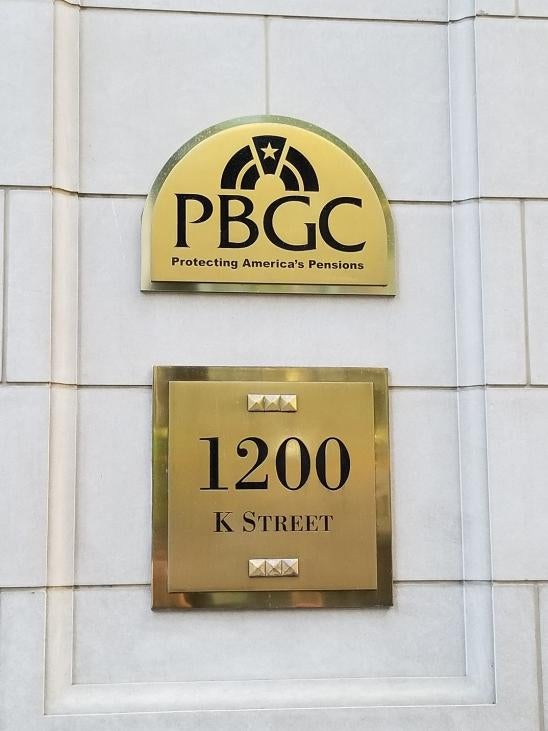On July 8, 2022, the Pension Benefit Guaranty Corporation (“PBGC”) published its much anticipated final rule on the special financial assistance (“SFA”) available to certain troubled multiemployer plans under the American Rescue Plan Act of 2021 (“ARPA”).
As we previously described in our client alert, ARPA provided for cash payments from the PBGC to eligible plans that were supposed to be in the amount necessary for the plans to pay benefits and administrative expenses through the plan year ending in 2051. In July 2021, the PBGC released an interim final rule (the “IFR”), which provided various details on the SFA program, including how the SFA amount would be calculated for an eligible plan, as we previously explained in detail. But the devil is always in the details, and there were a number of questions raised by the IFR, including whether the assumptions and conditions established by the IFR would provide enough SFA for all eligible plans to remain solvent through 2051.
Responding to a number of comments on the IFR, the PBGC’s final rule made several changes to the IFR. Most notably, the final rule attempted to address the concerns that some plans would not receive sufficient SFA to remain solvent through 2051. It also addressed concerns that plans that previously implemented benefit suspensions under the Multiemployer Pension Reform Act of 2014 (“MPRA”) would be disadvantaged if they sought ARPA relief and, as required, revoked their MPRA suspensions.
These and other key changes made by the PBGC in the final rule are summarized below.
-
Methodology and Assumptions to Calculate Special Financial Assistance
Separate Investment Return Assumptions for SFA and Non-SFA Assets. In order to calculate the amount of SFA to which an eligible plan is entitled, the IFR prescribed a single investment return assumption equal to the lesser of the interest rate used for funding standard account projections in the most recent zone status certification completed before 2021 or 200 basis points plus the third segment rate in the last four months prior to the filing of the application (approximately 6.7% based on current rates). At the same time, the IFR required a plan to invest its SFA in investment grade-bonds, which were yielding far less than that rate.
For many plans, this meant that the PBGC would provide SFA necessary to maintain solvency through the plan year ending in 2051 assuming the SFA it provided would earn more than it actually could in light of the investment restriction. The result was that some of these plans would become insolvent before 2051 even with the SFA.
The final rule addressed this issue by calculating SFA using separate investment return assumptions for SFA and non-SFA assets. For SFA assets, the assumption is 67 basis points plus the average of the three segment rates (approximately 4.85% today) for the month in which the average is the lowest among the four months prior to the filing of the application. For non-SFA assets, the assumption is the one that previously applied, except that the third segment rate for the “cap” is the lowest in the last four months prior to the filing of the plan’s application.
Proskauer observation: The assumptions provided in the final rule are more likely to match a plan’s actual experience, making eligible plans more likely to maintain their solvency through 2051.
SFA Amount for MPRA Plans. The final rule increases (potentially significantly) the amount of SFA available to plans that implemented suspensions under MPRA as of March 11, 2021 in response to concerns that trustees of such plans had to grapple with whether to avoid insolvency indefinitely (the standard required to implement suspensions under MPRA) and forego SFA or accept SFA and reinstate benefits (as required by ARPA to receive SFA) and jeopardize the plan’s long-term viability.
The final rule allows a MRPA plan to apply for the greatest of: (1) the SFA amount for non-MPRA plans; (2) the amount sufficient to ensure that the plan will project increasing assets at the end of the 2051 plan year; or (3) the present value of reinstated benefits, including both make-up payments for previously suspended benefits, as well as payments of the reinstated portion of the benefits expected to be paid through 2051.
Proskauer observation: By providing for sufficient SFA to ensure that a plan will project increasing assets at the end of the 2051 plan year, the PBGC is using a standard that approximates the position the plan would be in if it maintained its MPRA suspension. Thus, trustees of plans with MPRA suspensions are no longer in the unenviable position of having to decide whether to sacrifice long-term solvency to obtain ARPA relief.
SFA Amount for Non-MPRA Plans. Under the final rule, the amount of SFA to a non-MPRA plan is calculated as the lowest dollar amount for which, as of the last day of each plan year during the SFA coverage period (which ends in 2051). This methodology was changed from the present value methodology in the IFR because of concerns raised about how the present value calculation was affected by the timing of cash flows.
Proskauer observation: Although many commenters hoped that the PBGC would provide all plans with SFA in amounts similar to those available to MPRA Plans, the PBGC stated that it believed that doing so would be inconsistent with the Congressional intent behind APRA.
Contribution Rate Increases after July 9, 2021. In projecting a plan’s resources to calculate its SFA amount, the final rule disregards contribution rate increases that are agreed to on or after July 9, 2021. The PBGC noted that this rule eliminated the incentive for bargaining parties to wait until after the plan receives its SFA to negotiate contribution increases.
Proskauer observation: This appears to exclude increases that are required by a rehabilitation plan that were not incorporated into an employer’s collective bargaining agreements as of that date.
-
Permissible Investments
The IFR only allowed plans that receive SFA to invest the SFA assets in high-quality, investment-grade bonds and certain other permissible investments that would be expected to yield similar returns. Many commenters expressed concern that this would make it harder (if not impossible) for many eligible plans to stay solvent until 2051, particularly in light of the investment return assumption described above.
The final rule pivoted from the IFR and altered the requirements for permissible investments of SFA assets. The final rule allows plans to invest up to 33% of its SFA assets in “return-seeking assets” (e.g., publicly traded, U.S. dollar denominated common stock; equity funds that invest primarily in public shares; and certain debt instruments of domestic issuers that are not investment-grade bonds). The remaining 67% of SFA must still be invested in investment-grade fixed income instruments.
Proskauer observation: The PBGC acknowledged that it took a conservative position in the IFR because ARPA expressly authorized PBGC to approve investments in asset classes other than investment grade bonds. However, PBGC stated that it wished to go through the notice and comment period under the IFR before expanding to other asset classes. By allowing a limited amount of additional diversification in the investment of SFA, the final rule attempts to balance the security of the taxpayer-funded SFA and the need to achieve investment returns to maintain solvency.
-
Special Withdrawal Liability Rules
Phased Recognition of SFA. Under the IFR, all of the SFA received by a plan was immediately treated as plan assets for withdrawal liability calculations. The final rule modifies this approach by phasing-in the treatment of SFA of a plan asset over time. The phase-in period begins from the first year the plan receives SFA through the end of the plan year that the plan is projected to exhaust SFA assets. The PBGC is seeking public comments on this aspect of the final rule.
Use of Mass Withdrawal Assumptions: The IFR required plans that receive SFA to calculate withdrawal liability for all withdrawing employers using the conservative mass withdrawal interest rate assumptions established by the PBGC. The final rule continues to require plans to use these rates until the later of: (1) 10 years after the end of the plan year in which the plan receives payment of SFA; or (2) the last day of the plan year in which the plan no longer holds SFA or any earnings in a segregated account. However, it refined the second date to prevent plans from holding a small amount of SFA just to extend the period during which this rule applies by providing that it is the last day of the plan year by which the plan projects it will exhaust its SFA assets, extended by the number of years, if any, that the first plan year of payment is after the plan year that includes the SFA measurement date.
-
Conditions on a Plan that Merges with a Plan that Receives SFA
In response to comments and uncertainty as to the restrictions and conditions that apply when a plan that receives SFA merges with another plan, the PBGC clarified the conditions that apply to those merged plans, as detailed in the following chart:
|
Application of Restrictions and Conditions After a Merger |
||
|
Applies to merged plan |
Does not apply to merged plan |
Other |
| ·Restrictions on uses of SFA
·Transfer or merger approval ·Withdrawal liability settlement approval ·Must file annual compliance statement ·Comply with periodic audit from PBGC |
·Restrictions on prospective benefit increases
·Restrictions on allocation of plan assets ·Restrictions on allocating expenses |
·Retroactive benefit increase: plan may apply for a waiver, but, absent a waiver, continues to apply to participants in the SFA plan
·Contribution decreases: plan may apply for a waiver, but, absent a waiver, continues to apply to employers who had obligation to contribute to SFA plan ·Allocating contributions and other income: plan may apply for a waiver, but, absent a waiver, continues to apply to contributions or income relative to the SFA plan before the date of the merger ·Withdrawal liability calculation: no waiver; conditions required to be applied to determine unfunded vested benefits (UVBs) that arose under the SFA plan before the date of the merger for purposes of allocating UVBs under ERISA § 4211(d) and determining withdrawal liability |
-
Other Conditions for SFA
PBGC generally maintained the other conditions it imposed on plans that receive SFA. However, the final rule made a few changes to the conditions. For example, with respect to the prohibition on benefit increases, it added a process pursuant to which a plan may request approval from PBGC to increase benefits if 10 years have passed since the end of the plan year in which SFA was paid and the plan will avoid insolvency notwithstanding the benefit increase.
-
Application Process
The final rule maintained the IFR’s priority and metering process. However, it also added a new process that allowed plans that file after March 11, 2023 and before the end of 2025 (as well as plans in priority groups 5 and 6) to file a “lock-in application” if the PBGC closes the application process temporarily due to metering. This pro forma e-mail application would allow the plan to lock in its base data (i.e., SFA measurement date, census data and interest rates) even though it cannot yet formally apply due to the temporary closure.
Proskauer observation: The new “lock-in application” process avoids a situation in which a plan that has already performed all of the work necessary to complete its application has to redo all of its calculations because the application process is temporarily shut down due to metering.
To further address timing concerns raised by commenters, the PBGC also changed the definition of the SFA measurement date from the last day of the calendar quarter immediately preceding the initial filing date to the last day of the third calendar month immediately preceding the initial filing date.
Plans that previously applied for SFA are permitted to supplement their applications to take advantage of the final rule, and plans that have already received their SFA may receive a second SFA payment based on the supplemental application.
* * *
The final rule is effective August 8, 2022, and will generally apply to both new SFA applications and previously submitted SFA applications if the plan submits a supplemental application. The final rule contains several other changes and nuances that we have not described here. Plans, employers, and other interested parties should consult with counsel regarding these details. The PBGC’s website also provides a host of additional resources regarding the SFA program. The authors thank summer associate Mallory Knudsen for her contribution to this blog post.





 i
i

